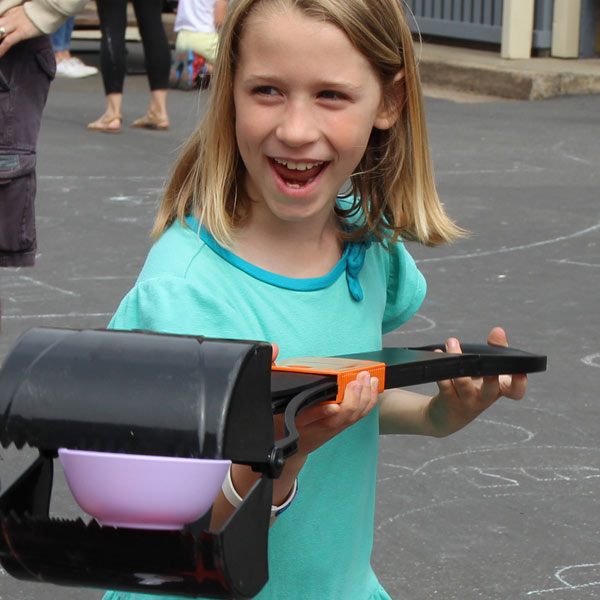Test the ability of various robotic arms to complete a range of tasks, then design and build your own.
Materials Required
- Grabbers (various types, e.g. trash pickers, tongs, chopsticks)
- Clothes hamper
- Clothes from the lost and found, hamper, or closet
- Toy chest or other container of a similar size
- Variety of toys
- Garbage can filled with clean “trash,” such as empty yogurt containers, plastic bottles, lids, etc.
- Materials for building end effector prototypes:
- popsicle sticks
- straws
- rubber bands
- tape
- pipe cleaners
- cardboard tubes
- wire coat hangers
- dowels
- bamboo skewers
- wooden paint stir sticks
- double stick tape
- Velcro
Instructions
- Invite children to use the gathered grabbers to perform household tasks such as picking up clothes and toys and sorting trash.
- Introduce children to the robotics term end effectors, which refers to the robotic arm, or the part of the robot where the arm and hand fits and is able to perform tasks.
- Encourage children to use the information gathered from the previously performed tasks to find inspiration for their own project, using materials like straws, popsicle sticks and paint stirrers to build their own end effector.
- Have children test their own creation by using it to pick up clothes and toys or sort trash.
- Let children refine and improve their design, then test it again.
- If they’d like, children can name their end effector based on what it does.
Additional Tips
Try these add-on activities:
- Look at images or watch videos online of various types of real robotic end effectors. Point out the different types of grippers and tools at the end of the robotic arms and discuss how their design enables their performance.
- Challenge children to modify their grabbers to do an additional challenge such as reach an object 5 feet away without dropping it, or pull down the cookie jar from a high shelf and open the jar.


